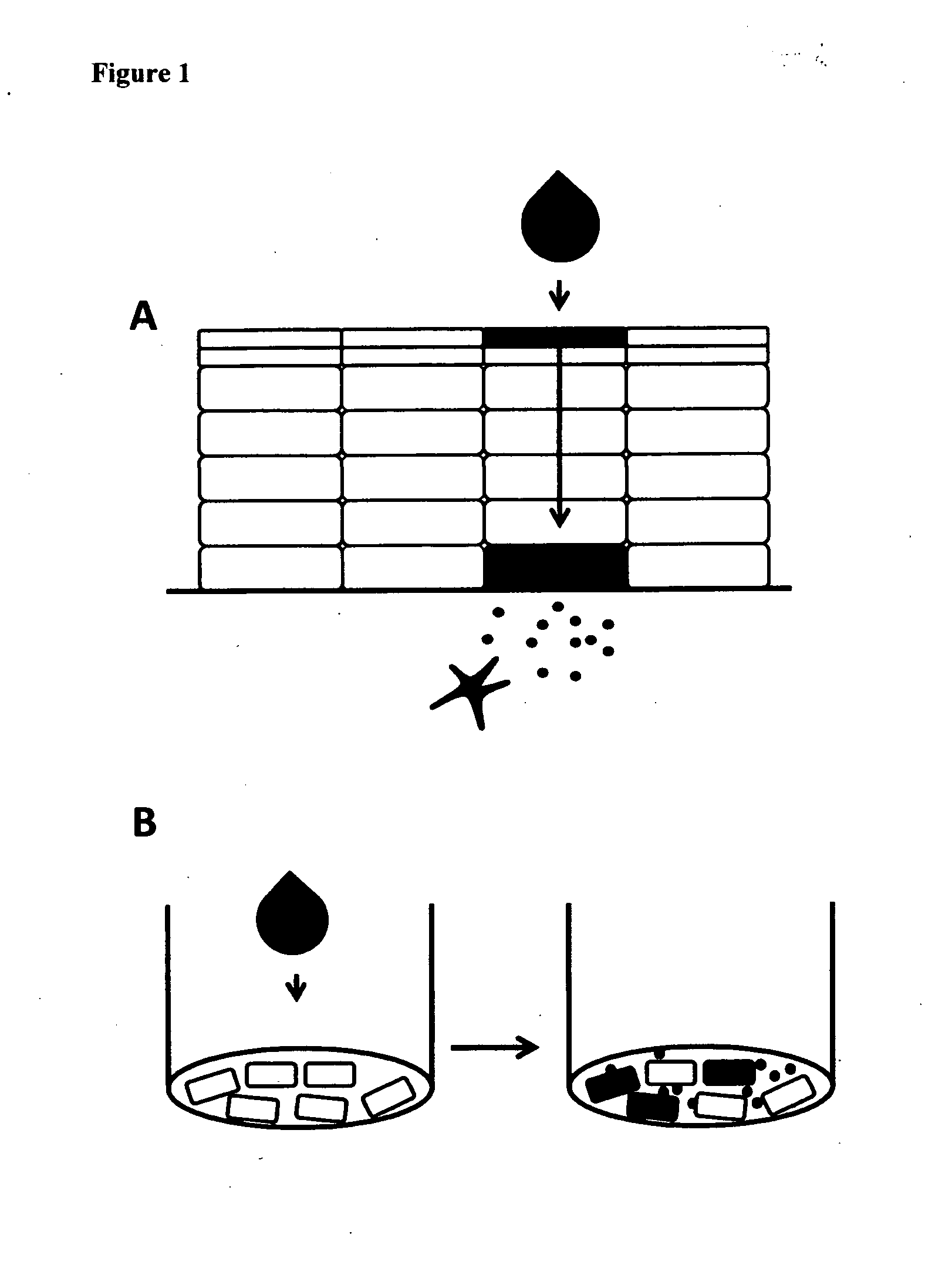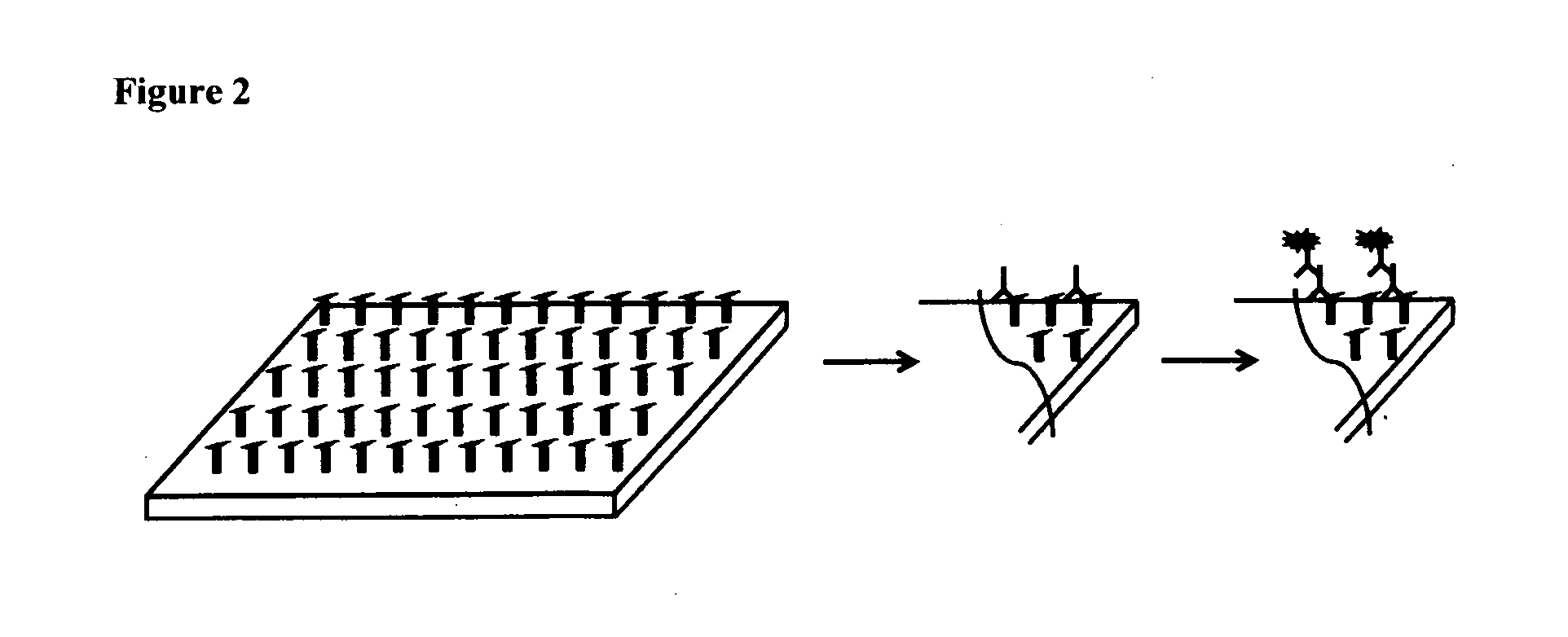Method for diagnosing and creating immunogenic tolerance in contact allergy and other epithelial immunotoxicological ailments
a technology of immunotoxicological ailments and immunogenic tolerance, applied in the field of immunology, can solve the problems of irritant contact dermatitis, difficult to do for ubiquitous allergens such as nickel, preservatives and fragrances, and major socioeconomic and psychosocial problems, and achieve the effect of facilitating the process
- Summary
- Abstract
- Description
- Claims
- Application Information
AI Technical Summary
Benefits of technology
Problems solved by technology
Method used
Image
Examples
example 1
[0125]Diagnosis of ACD / Autoimmune Diseases / DHRs / etc. Using Blood-Derived Serum from Hapten-Exposed Mice
Epithelial Exposure of Various Compounds and Collection of Sera
[0126]Mice: CBA / Ca, females, 8-12 weeks old at the start of the experiment. (BK Scanbur, Sollentuna, Sweden).
[0127]Dissolve the chemical to be tested in molecular biology grade dimethyl sulfoxide (DMSO, Sigma Aldrich, Stockholm, Sweden) or other solvent recommended by OECD (e.g. acetone:olive oil 4:1) to yield the desired concentration.
[0128]For extreme sensitizers (EC310%): use the same concentration as the EC3-value.
Examples of Compounds Used in Experiment without Booster Dose on Day 10:
[0129]Extreme sensitizers: Oxazolone (4-Ethoxymethylene-2-phenyl-2-oxazolin-5-one, 1.4 mM) CDNB (1-Chloro-2,4-dinitrobenzene, 7.4 mM), p-Benzoquinone (9.3 mM); Strong sensitizers: mBBr (44.3 mM), dBBr (48.6 mM), qBBr (48.9 mM), p-Phenylenediamine (148.0 mM), Benzyl bromide (116.9 mM), Formaldehyde (2.3 M); Moderate sensitizers: 1,2-Ben...
example 2
[0143]Diagnosis: Mapping Epitopes of Antibodies in Blood-Derived Sera from Hapten-Exposed Mice
Epithelial Exposure of Various Compounds and Collection of Sera
[0144]Mice: CBA / Ca, females, 8-12 weeks old at the start of the experiment. (BK Scanbur, Sollentuna, Sweden).
[0145]Dissolve the chemical in molecular biology grade dimethyl sulfoxide (DMSO, Sigma Aldrich, Stockholm, Sweden) or other solvent recommended by OECD (e.g. acetone:olive oil 4:1) to yield the desired concentration.
[0146]For extreme sensitizers (EC310%): use the same concentration as the EC3-value.
Examples of Compounds Used in Experiment with Booster Dose on Day 10:
[0147]Extreme sensitizers: Oxazolone (4-Ethoxymethylene-2-phenyl-2-oxazolin-5-one, 1.4 mM) CDNB (1-Chloro-2,4-dinitrobenzene, 7.4 mM)); Strong sensitizers: dBBr (48.6 mM), Glyoxal (ethane-1,2-dione, 1.27 M). DMSO is used as control. All chemicals are purchased from Sigma-Aldrich (Stockholm, Sweden).
Procedure:
[0148]Apply 25 μl of the solution to the back of bot...
example 3
Protocol for Induction of Tolerance in Mice
[0152]Mice: CBA / Ca, females, 8-12 weeks old at the start of the experiment. (BK Scanbur, Sollentuna, Sweden).
[0153]Peptides (including, but not limited to): 1: [Ace]-RISLGGACGAGGYG-[Amide]; 2: [Ace]-SLYNVGGSKRISYSS-[Amide], 3: [Ace]-DGKVVSTHEQVLRT-[Amide]. The peptides are custom synthesized and purified by ProImmune (Oxford, UK). The peptides 1 and 2 represent sequences from keratin 5 and peptide 3 is derived from keratin 14; however, it is the intention that the invention also includes peptides and / or proteins from other proteins, e.g. such as those found in the blebs from keratinocytes that have been exposed to haptens (sensitizing molecules).
Modification of the Cysteine in Peptide 1:
[0154]Dissolve the peptide in pH 7.4 PBS (Sigma Aldrich, Stockholm, Sweden) to a concentration of 20 mM. Add mBBr (Sigma Aldrich, Stockholm, Sweden) to a concentration of 40 mM. Transfer the solution to a spin column with ˜10 μm pore size polyethylene filter...
PUM
| Property | Measurement | Unit |
|---|---|---|
| diameter | aaaaa | aaaaa |
| pH | aaaaa | aaaaa |
| pH | aaaaa | aaaaa |
Abstract
Description
Claims
Application Information
 Login to View More
Login to View More - R&D
- Intellectual Property
- Life Sciences
- Materials
- Tech Scout
- Unparalleled Data Quality
- Higher Quality Content
- 60% Fewer Hallucinations
Browse by: Latest US Patents, China's latest patents, Technical Efficacy Thesaurus, Application Domain, Technology Topic, Popular Technical Reports.
© 2025 PatSnap. All rights reserved.Legal|Privacy policy|Modern Slavery Act Transparency Statement|Sitemap|About US| Contact US: help@patsnap.com



